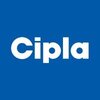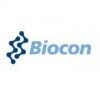Filter interviews by
Indian Pharma Company Quality Controller Interview Questions, Process, and Tips
Indian Pharma Company Quality Controller Interview Experiences
1 interview found
I applied via Company Website
Interview Questionnaire
13 Questions
- Q1. principle of HPLC
- Ans.
HPLC is a technique used in quality control to separate, identify, and quantify components in a mixture.
HPLC stands for High-Performance Liquid Chromatography.
It is based on the principle of separating components of a mixture using a liquid mobile phase and a solid stationary phase.
The separation is achieved by the differential interaction of the components with the stationary phase.
The components are detected and quan...
- Q2. Principle GC
- Q3. What is spectroscopy
- Ans.
Spectroscopy is the study of the interaction between matter and electromagnetic radiation.
It involves the measurement of the absorption, emission, or scattering of electromagnetic radiation by a sample.
It is used in various fields such as chemistry, physics, astronomy, and biology.
Examples include UV-Vis spectroscopy, infrared spectroscopy, and nuclear magnetic resonance spectroscopy.
It can be used for qualitative and ...
- Q4. What is pH and it's range
- Ans.
pH is a measure of acidity or alkalinity of a solution on a scale of 0-14.
pH stands for 'potential of hydrogen'
A pH of 7 is neutral, below 7 is acidic, and above 7 is alkaline
The pH scale is logarithmic, meaning each whole number change represents a tenfold change in acidity or alkalinity
Examples of pH values: lemon juice (2.0), vinegar (2.5), water (7.0), baking soda (8.5), ammonia (11.5)
- Q5. What is normality
- Ans.
Normality refers to the concentration of a solution in terms of the number of equivalents of solute per liter of solution.
Normality is a measure of concentration used in chemistry.
It is defined as the number of equivalents of solute per liter of solution.
It is different from molarity, which is the number of moles of solute per liter of solution.
For example, a 1N solution of hydrochloric acid contains 1 equivalent of HC...
- Q6. What is molarity
- Ans.
Molarity is a measure of the concentration of a solution expressed as the number of moles of solute per liter of solution.
Molarity is calculated by dividing the number of moles of solute by the volume of the solution in liters.
It is denoted by the symbol 'M'.
Molarity is commonly used in chemistry to express the concentration of a solution.
For example, a 1 M solution of sodium chloride contains 1 mole of sodium chloride
- Q7. What is solution, solvent,solute
- Ans.
Solution, solvent, and solute are terms used in chemistry to describe the components of a homogeneous mixture.
A solution is a homogeneous mixture composed of a solvent and one or more solutes.
The solvent is the substance that dissolves the solute(s) to form the solution.
The solute is the substance that is dissolved in the solvent to form the solution.
For example, in a saltwater solution, water is the solvent and salt i
- Q8. Titration types
- Q9. What is acid and base
- Ans.
Acid and base are two types of chemical substances with opposite properties.
Acids are substances that donate hydrogen ions (H+) in a solution.
Bases are substances that accept hydrogen ions (H+) in a solution.
Acids have a pH value less than 7, while bases have a pH value greater than 7.
The reaction between an acid and a base is called neutralization, which results in the formation of salt and water.
Examples of acids inc...
- Q10. Which of strong/week acid base
- Ans.
Strong acids and bases dissociate completely in water, while weak acids and bases only partially dissociate.
Strong acids: HCl, HNO3, H2SO4
Strong bases: NaOH, KOH, Ca(OH)2
Weak acids: acetic acid, carbonic acid
Weak bases: ammonia, pyridine
- Q11. What is end point
- Ans.
End point refers to the point at which a process or reaction is considered complete.
It is the final stage of a process or reaction
It is the point at which a desired outcome is achieved
In quality control, it is the point at which a product meets the required specifications
Examples include the endpoint of a titration, the endpoint of a chemical reaction, and the endpoint of a manufacturing process
- Q12. Principle of UV
- Ans.
UV principle is based on the absorption of light by molecules and atoms, leading to electronic transitions.
UV radiation causes electronic transitions in molecules and atoms
The energy absorbed by the molecule or atom is proportional to the wavelength of the UV radiation
UV spectroscopy is used to identify functional groups in organic molecules
UV radiation is also used for sterilization and disinfection purposes
- Q13. Principle of Raman spectroscopy
- Ans.
Raman spectroscopy is a technique used to study vibrational, rotational, and other low-frequency modes in a system.
It involves the use of a laser to excite the molecules in a sample, causing them to vibrate and emit light at different wavelengths.
The resulting spectrum can be used to identify the chemical composition of the sample and study its molecular structure.
Raman spectroscopy is commonly used in materials scienc...
Interview Preparation Tips
Skills evaluated in this interview
Top trending discussions






Interview questions from similar companies

(2 Questions)
- Q1. Asked regarding quality control tests for tablets and capsules?
- Q2. Disintegration and dissolution
(2 Questions)
- Q1. Introduction on myself.
- Q2. Work experience
Interview Preparation Tips

Quality Controller Interview Questions & Answers
Sun Pharmaceutical Industriesposted on 27 Jan 2024
I applied via Company Website and was interviewed in Dec 2023. There were 3 interview rounds.
This time I am fresher now and my first assignment was identification and isolation of microbial flora in sugarcane juices
I am hardworking girl I always face lots of problems in my family and I mentally strong all well prepared to face all types of problems
(1 Question)
- Q1. Education aspects, behavioural aspects, situational aspects

I applied via Company Website and was interviewed in Sep 2023. There were 2 interview rounds.

(2 Questions)
- Q1. Company full in the all works hard work in the all staff in the control HR duty
- Ans. Company project and quickly sharp in the timing customer care confirmation properly response will be but everything hard work in the my company work so explain for HR....!
- Q2. Customer project in the completed so stop employed speaking for in the proper in the my project in complete .....!
Interview Preparation Tips
- Chennai

Quality Controller Interview Questions & Answers
Aurobindo Pharmaposted on 2 Mar 2023
I applied via Walk-in and was interviewed in Feb 2023. There were 3 interview rounds.

(2 Questions)
- Q1. Chemistry related questions
- Q2. What is chemistry? What is difference between organic and inorganic chemistry
- Ans.
Chemistry is the study of matter and its properties. Organic chemistry deals with carbon-based compounds while inorganic chemistry deals with non-carbon-based compounds.
Chemistry is a branch of science that deals with the composition, structure, properties, and reactions of matter.
Organic chemistry is the study of carbon-based compounds, including hydrocarbons, carbohydrates, proteins, and nucleic acids.
Inorganic chemi...
(1 Question)
- Q1. How much Salary package you want?
Interview Preparation Tips
- Chemistry

Quality Controller Interview Questions & Answers
Sun Pharmaceutical Industriesposted on 4 May 2024
I applied via Walk-in and was interviewed before May 2023. There were 2 interview rounds.
(2 Questions)
- Q1. What is hplc ?pricinple? U know about TlC? What is chromatography? What is pH and ranges? What is uv and principle? U know about ICH?
- Ans.
HPLC stands for High Performance Liquid Chromatography. It is a technique used to separate, identify, and quantify components in a mixture.
HPLC is based on the principle of separating components in a mixture using a liquid mobile phase and a solid stationary phase.
TLC (Thin Layer Chromatography) is another chromatographic technique where the stationary phase is a thin layer of adsorbent material on a flat support.
Chrom...
- Q2. What is hplc? Principle! U know about TLC? What is chromatography? What is pH and ranges? What is Uv and principle? U know about ICH
- Ans.
HPLC stands for High Performance Liquid Chromatography. It is a technique used to separate, identify, and quantify components in a mixture.
HPLC is based on the principle of separating components in a mixture using a liquid mobile phase that carries the sample through a stationary phase.
TLC stands for Thin Layer Chromatography, which is a technique for separating and analyzing mixtures based on their differential migrat...
(1 Question)
- Q1. Intro ,what about know sunpharma and basic chemistry, salary dessiusion

I applied via Job Portal and was interviewed in Jul 2023. There were 3 interview rounds.

Maths reasoning questions
(1 Question)
- Q1. Easy questions for this round
Interview Preparation Tips

I applied via campus placement at Kakatiya University

(1 Question)
- Q1. Resumes prepare and
(4 Questions)
- Q1. Interviews basic knowledge
- Q2. Basic knowledge multiple questions in chemistry
- Q3. Hr team chemistry give the small question interviews
- Q4. Anyone questions 10 questions but example
Interview Preparation Tips

Quality Controller Interview Questions & Answers
Sun Pharmaceutical Industriesposted on 27 Jan 2024
I applied via Company Website and was interviewed in Dec 2023. There were 3 interview rounds.
This time I am fresher now and my first assignment was identification and isolation of microbial flora in sugarcane juices
I am hardworking girl I always face lots of problems in my family and I mentally strong all well prepared to face all types of problems
(1 Question)
- Q1. Education aspects, behavioural aspects, situational aspects

I applied via Referral and was interviewed in Jun 2022. There were 6 interview rounds.

Continuous with aptitude test and learning and career development
Answer with writing any assignments
(3 Questions)
- Q1. What do you about your proposal
- Q2. Which developed by company
- Q3. What do you about like working company
(1 Question)
- Q1. How can you prepared by company work
Any one with help to the company development
Interview Preparation Tips
Indian Pharma Company Interview FAQs
Tell us how to improve this page.
Indian Pharma Company Interviews By Designations
- Indian Pharma Company Industrial Pharmacist Interview Questions
- Indian Pharma Company Manufacturing Executive Interview Questions
- Indian Pharma Company Market Executive Interview Questions
- Indian Pharma Company Quality Controller Interview Questions
- Indian Pharma Company R&D Chemist Interview Questions
Interview Questions for Popular Designations
- Document Controller Interview Questions
- Financial Controller Interview Questions
- job Controller Interview Questions
- Production Quality Controller Interview Questions
- Process Controller Interview Questions
- Credit Controller Interview Questions
- Inventory Controller Interview Questions
- Project Controller Interview Questions
- Show more
Quality Controller Interview Questions from Similar Companies
|
Medical Representative
3
salaries
| ₹1.8 L/yr - ₹3.1 L/yr |
|
Medical Advisor
3
salaries
| ₹12.3 L/yr - ₹22 L/yr |

Sun Pharmaceutical Industries

DRJ & CO

Cipla

Biocon Limited
- Home >
- Interviews >
- Indian Pharma Company Interview Questions >
- Indian Pharma Company Quality Controller Interview Questions






